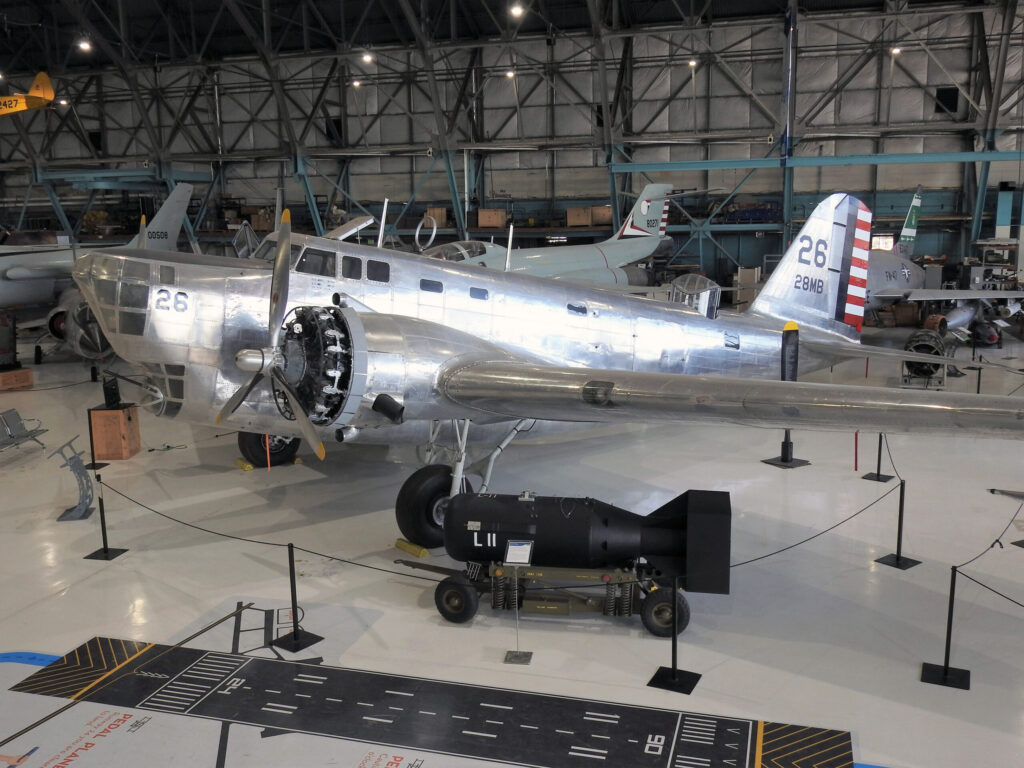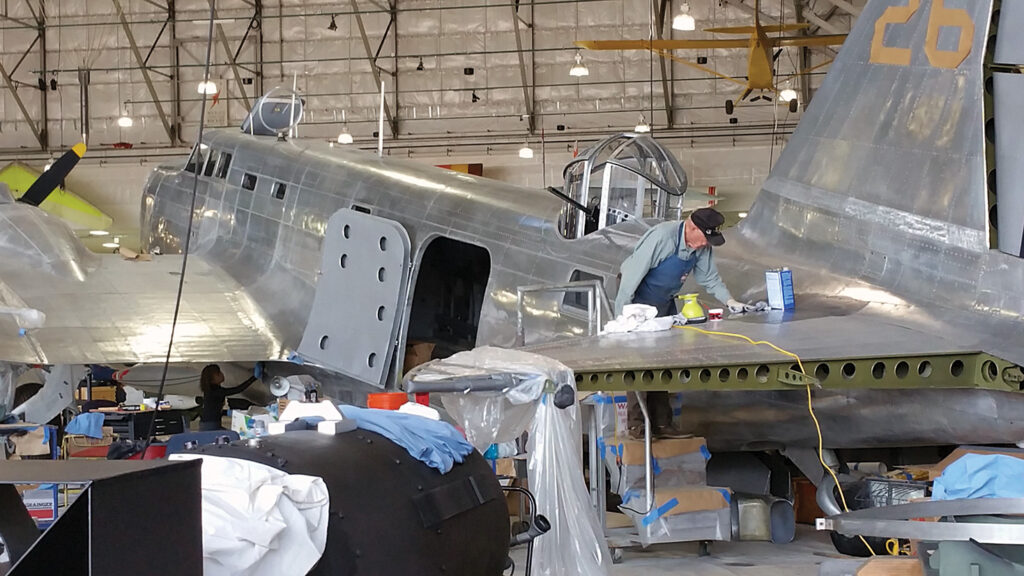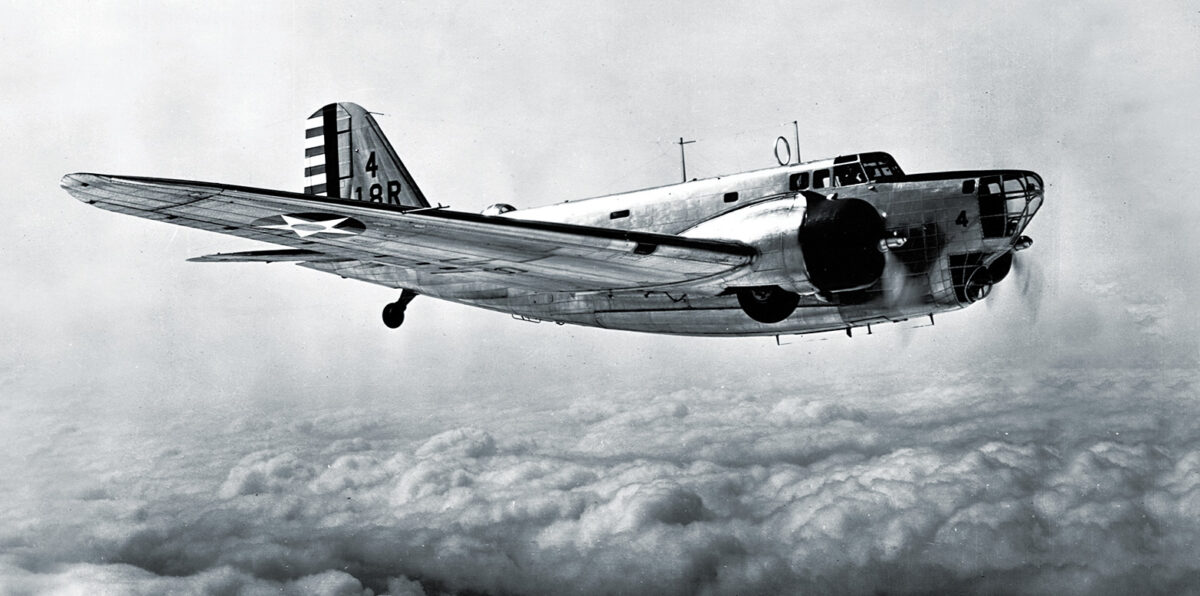While many aviation museums may display a Boeing B-29 Superfortress or B-17 Flying Fortress or even a Consolidated B-24 Liberator, very few possess a Douglas B-18 (Bolo) bomber. In fact, many aviation enthusiasts have never even heard of, let alone seen, a B-18. There are good reasons for this. Douglas built only 350, and few of those saw active service in World War II. Only six B-18 airframes still exist (and one of those is from a Bolo that crashed in 1941 in Hawaii, where its wreckage remains to this day, exposed to the elements).
The B-18 was based on Douglas’s DC-2 commercial transport and the Army named it the Bolo after the famed curved knife. The prototype made its first flight in April 1935. Manned by a crew of six and with an operational range of 2,100 miles, the twin-engine Bolo could carry up to 4,500 pounds of bombs and had a top speed of 215 mph. Already obsolete by the start of World War II, many B-18s that flew in combat were equipped with magnetic anomaly detectors and used for anti-submarine warfare.
One B-18A, currently on display at the Wings Over the Rockies Air and Space Museum in Denver, Colorado, has undergone a remarkable restoration after a lifetime of literal and metaphorical ups and downs. The aircraft, serial number 39-025, rolled off the Douglas assembly line in 1940, the second-to-last B-18 ever constructed. Delivered to the United States Army Air Corps on February 20 of that year, the Bolo started its operational life as a training airplane at Chanute Field in Illinois. Subsequent stints as a trainer followed in Louisiana, New Mexico, Texas, Utah, Ohio and California.

In November 1944, 39-025 was removed from the government’s inventory and wound up with the Reconstruction Finance Corporation (RFC). The RFC focused on supporting local economies through loans and the support of banks, but it also became known during and after World War II for its role in handling surplus military aircraft. At one point the RFC owned more than 100,000 aircraft, including thousands of fighters and bombers.
The B-18 then passed through several civilian hands after the RFC sold it for $3,000, and it became a workhorse for various owners throughout the 1940s, serving as a cargo aircraft, aerial photography platform, agricultural sprayer and forest firefighter. A veterinarian who owned it may have used the airplane to transport animals. The original Wright 1820-53 engines were replaced several times with the same or similar models. The 1950s again saw the airplane change hands repeatedly and it flew as a cargo hauler, magnetic field mapper and sprayer in Oregon, Alaska, Florida and Cuba.
This particular B-18 is perhaps best known for its (brief) role in Fidel Castro’s Communist revolution in Cuba. In 1958, the U.S. Border Patrol impounded the aircraft in Florida after its then-owner flew it to an abandoned airfield near Fort Lauderdale and loaded it with guns, ammunition and other equipment in packages marked “Fidel.” The border patrol turned the airplane over to U.S. Customs, which eventually returned it to the U.S. Air Force at its request and from 1961 to 1974 it was on display at the Air Force’s museum. After that it received some limited restoration at New Mexico’s Cannon Air Force Base in the late 1970s, and finally made its way to the Lowry Heritage Museum in Colorado in 1988. The aircraft arrived on flatbed trucks in several pieces. Their reassembly officially kicked off the current restoration.
The venerable airplane required extensive cleaning, since innumerable birds had made it their home over the years. Work continued as the 1980s gave way to the 1990s, Lowry Air Force Base shut down and the Lowry Heritage Museum became Wings Over the Rockies Air and Space Museum. Progress was slow, mostly due to limited funds and other competing restoration efforts.
The original nose had long since been re- placed with an enclosed fiberglass one, but the restorers wanted to return the aircraft to a configuration that was correct for the 1930s and 1940s. Helpful individuals at McDonnell Douglas provided plans and specifications and the Raytheon corporation offered assistance to create a new nose from scratch. Local expertise in sheet metal working and aircraft fabrication were also critical to the restoration effort. Key restoration team members included Helen “Jaymes” Bond, Tom Thayer, Bob Kohler, Steve Groth, David Tomecek and Mike Smaling, but many more individuals were involved in the project over the years.

The aircraft arrived with a dark green paint scheme, but by the late 1990s and early 2000s it was painted light green with a blue/gray patch on the belly (to mimic wartime camouflage coloring). This paint, and other layers below it, was eventually stripped away to reveal the underlying aluminum skin and rivets, much as the airplane would have appeared when it first rolled off the factory floor.
To give a sense of just how labor intensive the restoration has been, each individual bolt on the wings was removed and cleaned before being put back into place. The engine cowlings that the aircraft arrived with were not original, having been fabricated at Cannon AFB, and have since been removed. Last year the restorers replaced one of the cowlings, using 3D printing to replace the forward three inches with plastic. “We’ve accomplished what we can without correcting some major external items,” says museum curator Chuck Stout. Items that were replaced over the years included the rear cargo door, bomb bay and lower turret.
The B-18, which is officially on loan from the National Museum of the U.S. Air Force (which has its own B-18 on display), now provides a centerpiece for the museum’s collections. Visitors to the museum will find it impossible not to notice, and be a bit awed by, the B-18 and its shiny aluminum skin. “Our [B-18] has seen a lot in its lifetime,” says Tomecek. “The restoration is a testament to the dedication of Wings Over the Rockies and the Restorations team to a combination of this specific aircraft, the local area and the more unique aspects of its 80-year history.”






